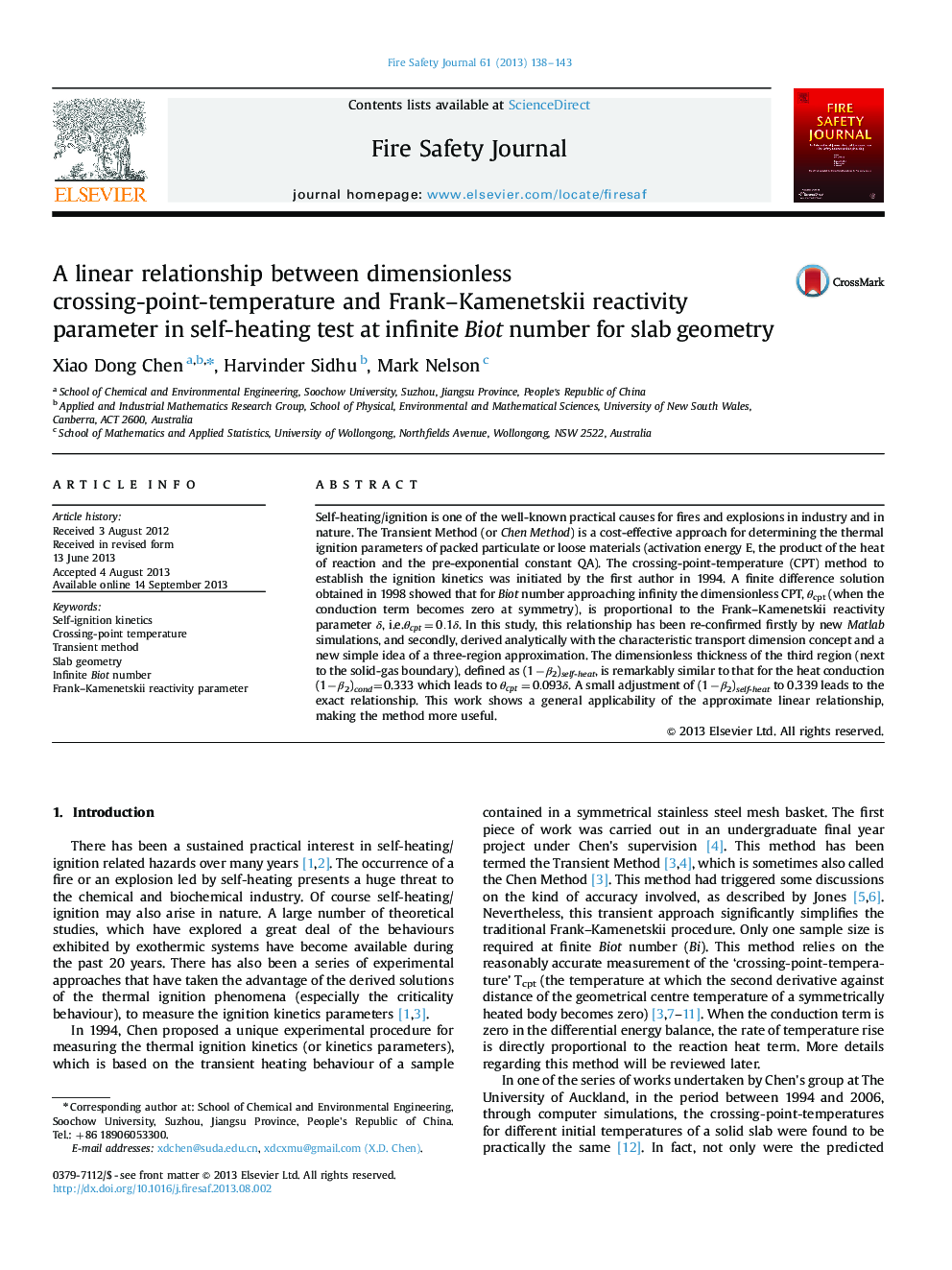| Article ID | Journal | Published Year | Pages | File Type |
|---|---|---|---|---|
| 6742215 | Fire Safety Journal | 2013 | 6 Pages |
Abstract
Self-heating/ignition is one of the well-known practical causes for fires and explosions in industry and in nature. The Transient Method (or Chen Method) is a cost-effective approach for determining the thermal ignition parameters of packed particulate or loose materials (activation energy E, the product of the heat of reaction and the pre-exponential constant QA). The crossing-point-temperature (CPT) method to establish the ignition kinetics was initiated by the first author in 1994. A finite difference solution obtained in 1998 showed that for Biot number approaching infinity the dimensionless CPT, θcpt (when the conduction term becomes zero at symmetry), is proportional to the Frank-Kamenetskii reactivity parameter δ, i.e.θcpt=0.1δ. In this study, this relationship has been re-confirmed firstly by new Matlab simulations, and secondly, derived analytically with the characteristic transport dimension concept and a new simple idea of a three-region approximation. The dimensionless thickness of the third region (next to the solid-gas boundary), defined as (1âβ2)self-heat, is remarkably similar to that for the heat conduction (1âβ2)cond=0.333 which leads to θcpt=0.093δ. A small adjustment of (1âβ2)self-heat to 0.339 leads to the exact relationship. This work shows a general applicability of the approximate linear relationship, making the method more useful.
Keywords
Related Topics
Physical Sciences and Engineering
Engineering
Civil and Structural Engineering
Authors
Xiao Dong Chen, Harvinder Sidhu, Mark Nelson,
